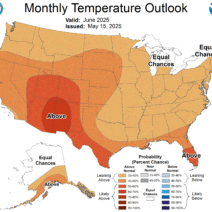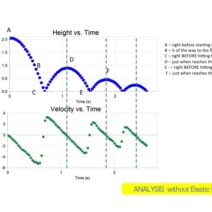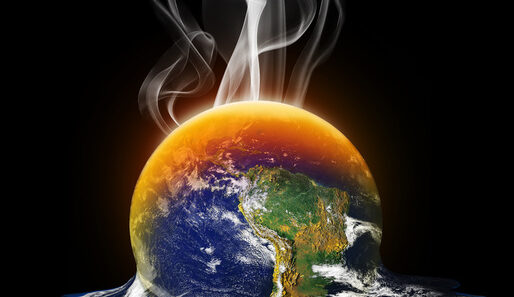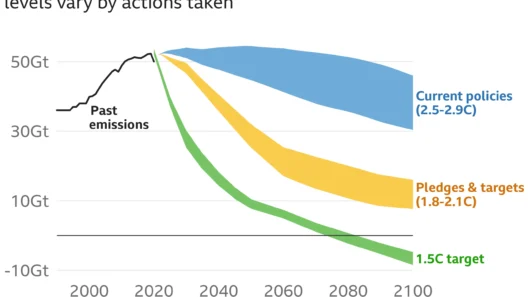The phenomenon of global warming is a subject of intense scrutiny among the scientific community. Recent discussions have turned toward the peculiar observations regarding a surge in warming that has seemingly evaded comprehensive detection. Why, one may wonder, has this uptick in temperature anomalies not garnered the attention it warrants? To unravel this enigma, one must delve into an exploration of climate science, data collection methodologies, and the natural variability of Earth’s climate system.
The first significant factor to consider is the intricacies of data collection. Global average temperatures are calculated using a variety of sources, including ground-based stations, satellite observations, and ocean buoys. Each of these sources has inherent limitations. For instance, ground stations are often unevenly distributed, with many located in urban areas influenced by local heat islands, leading to skewed data. The result? An incomplete picture of global temperature fluctuations. Moreover, satellite data, while invaluable for long-term trends, can encounter calibration errors and temporal gaps that cloud immediate assessments of warming patterns.
Furthermore, the temporal aspect of climate monitoring presents a formidable challenge. The climate system exhibits significant variability over various timescales, from seasonal to decadal shifts, which complicates the detection of trends. There are periods of natural warming phases interspersed with cooling trends. For example, think back to the late 20th century: the surface temperatures rose, leading to heightened concerns about anthropogenic contributions. The subsequent flattening of temperatures in the early 2000s was misleading. Was that a brief respite or an indication of something more profound? This variability can obscure the true nature of climatic change, masking a potential surge in warming beneath the layers of normal fluctuations.
Another layer to this puzzle is the role of oceanic systems in regulating surface temperatures. Water has an unparalleled capacity to absorb heat; thus, the oceans act as a crucial buffer against atmospheric temperature rise. When surface temperatures increase, the oceans can absorb an equivalent amount of heat, leading to a delayed response in atmospheric warming. However, this phenomenon creates a ticking time bomb: as oceans reach their thermal capacity, any additional influx of heat will begin to register in the atmosphere with alarming speed. If we consider this aspect, could it be that the upticks in heat retention within our oceans are silently foreshadowing drastic changes yet to permeate the air we breathe? The delayed response poses a paradoxical challenge for scientists trying to monitor and predict climate change accurately.
Moreover, the potential for extreme weather events adds another layer of complexity. These events, while often linked to climate change, can catalyze short-term fluctuations in temperature averages. A year marked by significant hurricanes or heatwaves can distort the climate record, leading to conclusions that may not necessarily reflect long-term trends. This phenomenon illustrates the need for a nuanced understanding of climate dynamics. For instance, the unusual warmth recorded in some regions could be partially attributed to intense heatwaves or localized microclimates that may mislead analysts into interpreting them as a sustained trend across wider geographies.
As we dip deeper into discussions surrounding the science, one must consider the implications of model projections. Climate models are essential tools for forecasting future scenarios based on various greenhouse gas emission trajectories. However, the accuracy of these models hinges on the myriad of assumptions made regarding feedback loops and climate sensitivity. Scientists often grapple with the implications of underestimating feedback mechanisms, such as the albedo effect or changes in cloud coverage. If these interactions, which can amplify warming, are miscalibrated, it leads to discrepancies in predicted warming trends versus actual measurements. Could it be that the surge we dread is simply encased within the fog of modeled uncertainty?
Equally important is the communication of scientific findings to the public. The complexities of climate science often lead to misinterpretations or oversimplifications in media reporting. Phrases like “the hottest year on record” can overshadow ongoing trends that may not align perfectly with popular narratives. Misinformation or selective reporting can create a false sense of security or an overreaction, sidelining the nuanced discussion that is essential to informed activism. It begs the question — how can we ensure that the discourse around global warming remains robust, accurate, and actionable?
The climate crisis is no longer a distant specter; it is an immediate challenge that humanity must confront. The potential surge that appears on the horizon could lead to unprecedented changes in our climate systems. Scientific communities are at the forefront of unraveling these complexities, yet there remains a pressing need for enhanced data collection methods and an investment in long-term climate monitoring programs. Research endeavors must be propelled forward, focusing on the realms of paleoclimate studies, oceanic heat dynamics, and detailed modeling of feedback loops.
Our understanding of global warming is ongoing and profoundly intricate, making it crucial to approach this subject with a sense of urgency. Each piece of empirical evidence gathered can lead us closer to unveiling the truth behind recent warming trends. As stewards of this planet, it is imperative to engage in robust conversation that fuels action. The journey to tackle global warming necessitates that we remain not just vigilant but curious, unearthing answers in a world filled with uncertainty. The challenge lies not only in identifying the surge but also in galvanizing a global response aimed at mitigating its effects.







